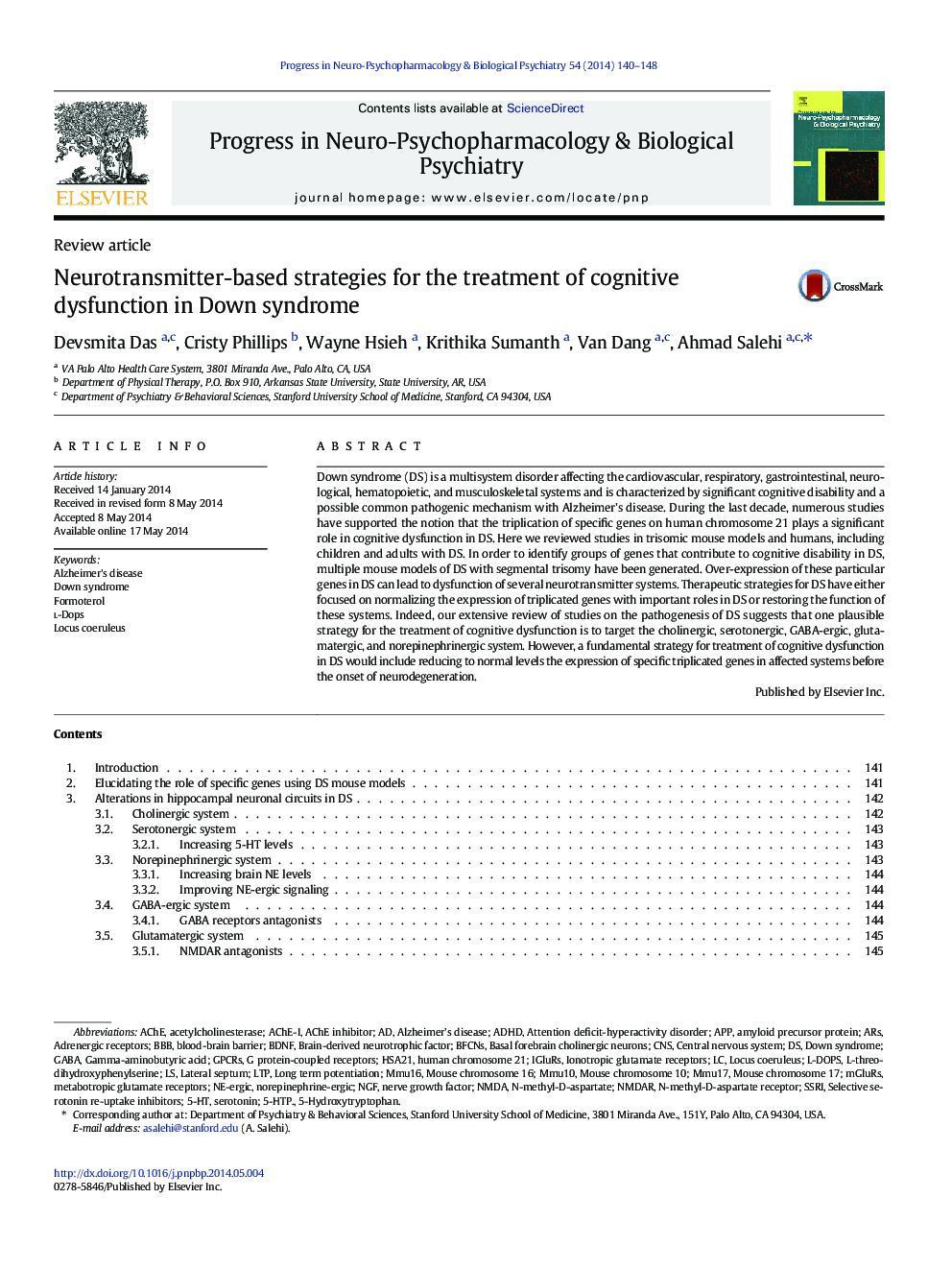| Article ID | Journal | Published Year | Pages | File Type |
|---|---|---|---|---|
| 5844355 | Progress in Neuro-Psychopharmacology and Biological Psychiatry | 2014 | 9 Pages |
•Cognitive dysfunction in DS has been linked to degeneration of neurotransmitter systems.•Overexpression of App in DS has been linked to degeneration in these systems.•Improving NE-ergic system in DS may decrease Aβ pathology and increase cognitive function.•Thus, targeting specific neurotransmitter systems appears to be a promising therapeutic strategy in DS.
Down syndrome (DS) is a multisystem disorder affecting the cardiovascular, respiratory, gastrointestinal, neurological, hematopoietic, and musculoskeletal systems and is characterized by significant cognitive disability and a possible common pathogenic mechanism with Alzheimer's disease. During the last decade, numerous studies have supported the notion that the triplication of specific genes on human chromosome 21 plays a significant role in cognitive dysfunction in DS. Here we reviewed studies in trisomic mouse models and humans, including children and adults with DS. In order to identify groups of genes that contribute to cognitive disability in DS, multiple mouse models of DS with segmental trisomy have been generated. Over-expression of these particular genes in DS can lead to dysfunction of several neurotransmitter systems. Therapeutic strategies for DS have either focused on normalizing the expression of triplicated genes with important roles in DS or restoring the function of these systems. Indeed, our extensive review of studies on the pathogenesis of DS suggests that one plausible strategy for the treatment of cognitive dysfunction is to target the cholinergic, serotonergic, GABA-ergic, glutamatergic, and norepinephrinergic system. However, a fundamental strategy for treatment of cognitive dysfunction in DS would include reducing to normal levels the expression of specific triplicated genes in affected systems before the onset of neurodegeneration.
Graphical abstractFigure optionsDownload full-size imageDownload as PowerPoint slide
